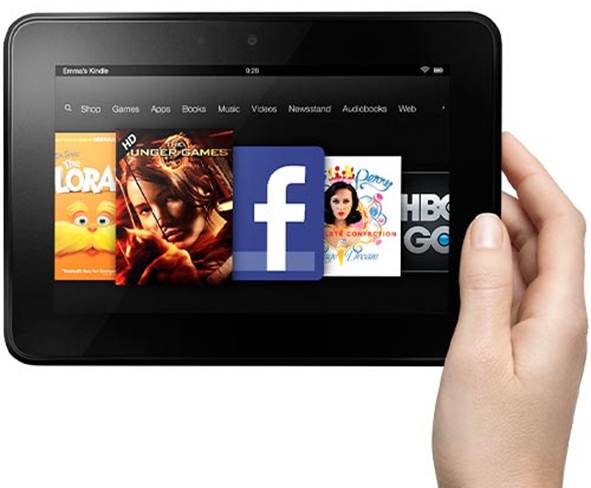As well as the usual suspects, there are
yet more tablets on the market, not least the Nook made by US book chain Barnes
& Noble.
Competing against products from Amazon,
Kobo, Sony, Google, Apple and all of the rest, B&N is hoping its 7” wonder
will be able to make its mark (it also has a 9” HD+ version).

The
Nook is going head to head with the iPad, competing mainly on price, being $160
cheaper
It’s not easy to break into this market,
especially so when you’re not a household name in the UK, and the Nook is going
head to head with the iPad, competing mainly on price, being $160 cheaper. And
yet that may not be enough now that the iPad Mini is here, ready to smash all
others comers out of the competition.
Competition is likely to be more fierce in
the 7” category where the basic $254 Nook HD, featuring 8GB of storage, will
compete against similarly priced offerings from Amazon, Kobo and Elonex as well
as the Nexus 7 tablet.
However, B&N impresses with its own
curated magazine, newspaper, book and app stores. It plans to add a video
service offering movies and television shows by early 2013.
The Nook tablets do not display adverts
either, unlike the Kindle Fire, which shows ‘special offers’ when put into lock
mode.
Kindle Fire HD

·
7” screen
·
1280x800 display
·
11 hour battery life
·
From $199
·
Wi-Fi
·
HD front facing camera
What of the Kindle Fire, then? Amazon’s
much-heralded tablet has finally made its way outside of its launch territory
of America. It can be bought for just $206 for the standard version or $254 for
HD. In America, there is an 8.9” version of the Kindle HD costing $478, which
is around half the price of the comparable iPad but this isn’t coming to the
UK. Amazon has said that it does not intend the Kindle Fire to be a competitor
to the iPad and you can take it from that that it won’t be competing against
the Nexus or iPad Mini either.
That’s because The Kindle Fire - which is
said to be sold at a loss - is more of a consumer device. In delivering
magazines, newspapers, books, films and music via Amazon’s enviable service, it
dispenses with features such as a back camera, although it does have a front
facing one as well as stereo speakers and an HDMI port in the HD models, the
latter allowing for the tablet to connect to a television. The touch-screen is
laminated, which reduces sun glare. The Kindle has two Wi-Fi antennas and
multiple-input and multiple-output radio wave technology. Yet it’s not aimed at
being a portable, powerful handheld computer and it’s not supposed to be
something that you massively expand with apps, although more than 50,000 are
available. The main idea is that you use it to consume content from Amazon.
It’s what the iPhone was to some degree when it was launched.
“I’m very impressed with the Kindle Fire on
a number of fronts,” says Rob Enderle, principal technology analyst at the
Enderle Group. “Unlike most others who seem to be trying to compete with Apple
on Apple’s terms (almost never successful), Amazon is trying to change the game
and force Apple to compete on Amazon’s terms by moving to a services focused
revenue model. It isn’t the hardware, as good as it is, that is the magic of
this, it is the depth of the services and the result is a compelling comparatively
inexpensive package of hardware/software/services that on paper provides a
substantially better value that Apple may find it nearly impossible to match.”
This means that the Kindle Fire is more of
a stand-alone tablet - a good second buy perhaps or something for those who
don’t want the power of the Nexus 7 or iPad. But it will have an impact? It has
taken 22% of the market in America, so the pounds spent on the Kindle Fire may
be fewer pounds spent on the other tablets.
“It will most likely remove much of the
demand for the Android products because they are vastly more exposed to this
because their fan base and customer loyalty is far smaller and weaker,” Enderle
argues. “This may be game over for Android tablets, which is interesting given
Google should have been able to get where Amazon is first but that would mean
paying the OEMs to use Android not just providing it for free. In the end while
this showcases that Apple’s model may now be out of date, it may also showcase
that Google’s model, at least for tablets, never was really competitive.”
Apple is continuing to plod along,
dominating the market. There have been disappointments. The iPhone update
showed little spark, providing little more than a faster processor and a
slightly larger screen and annoying many with a poor maps app and a new
connector, which is now becoming standard across the iOS device range.
For a consumer base looking for great
things after the iPhone 4, the 4S and 5 have hardly been major leaps and it has
left many disappointed. The iPad, however, continues to surprise. Apple’s
device dominates like nothing else and the iPad Mini is going to consolidate
that position for some time. Phil Schiller, Apple’s senior vice president for
marketing, was quick to criticize the Nexus 7 tablet, pointing to its plastic
build quality and noting that the Mini’s screen has 29.6 inches of screen
space, compared to 21.9 inches for the Nexus tablet.